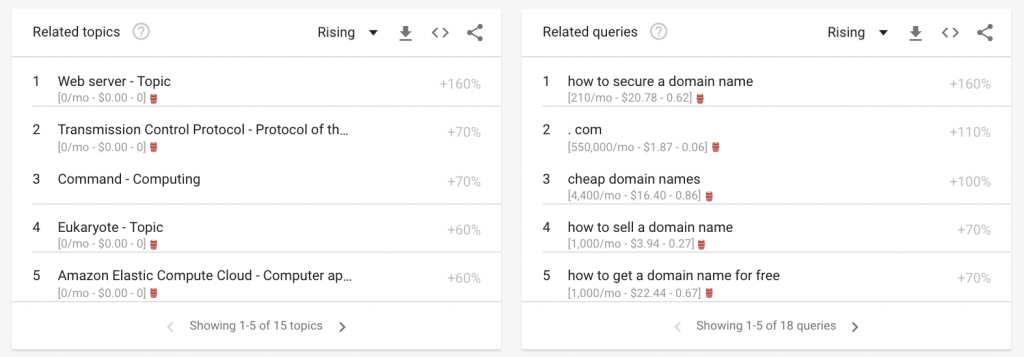3 Effective Ways Startups Can Keep Up With The Latest Startup Trends
By Samantha Lloyd
When you’re a new company, you know how important it is to compete in search to draw in valuable partnerships, leads, customers, investors, and more. The best way to compete in Search Engine Results Pages (SERPs) is to keep an eye on the startup trends and become an authority online through content marketing.
However, what good is your content if no one ever sees it? Irrespective of how SEO-oriented your content is, it won’t populate for typical search queries if you’re not aligning your content with the latest startup trends and your target keywords.
In this article, we will touch upon three effective and promising ways you can stay abreast with the latest startup trends online.
1. Identify Startup Trends & Plan Your Keywords Accordingly
Google Keyword Planner offers you the ability to see which keywords are related to a specific URL, the competition for those keywords, and the cost to bid on them for advertising.
Instead of entering a URL, you can also enter keywords or search queries to see for any new startup trends, competition, and use over time.
I always recommend writing content that has the highest possible searches with the lowest possible competition.
In the example below, you’ll see the phrase “startup companies” has low competition, meaning few people are targeting this keyword in paid search, but it has a fairly high and competitive search volume.
Write some organic content for these types of search queries to see how it performs with your audience.
Also, try to align them with any latest startup trends you may know of. If it does well for your sales or end goals, you know that bidding on this keyword in advertising will likely have a great return for your business.

If you’re really hooked on keywords, check out Keywords Everywhere, a chrome extension that gives you the search data on any query you enter.
It’s absolutely fascinating and keeps you thinking about keywords regularly even during your personal searches.

2. Find Out Search Engine Trends
Sometimes when crafting content surrounding the same target market, you can get a bit stuck on ideas.
It’s not always easy to constantly come up with new ideas for the same audience over and over.
Using Google Trends can help you broaden that target by showing you related searches and interests of your users.
At Hover, we write a lot of content about domain names specifically, but if you search the term “domain name” in Google trends, you can see related web searches from users.

If you can tie in top search trends in an organic way, you definitely should.
For example, if you are a Toronto-based company, then why not take advantage of the Toronto Raptors mania!
Play that angle by showing off your company’s Raptors spirit, talking about how the Raptors have driven even more attention to your city, or discuss the “unofficial” sports teams your company has for their employees.
Google Trends is also great for understanding regional/ geographic trends and overall trends of Google search.
If you’re ever truly enthralled (like I am) by how people search, I highly recommend reading Everybody Lies, which delves into how people search.
3. Study Your Audience’s Interests
While there are many paid analytics tools that can give you a true deep dive into your users’ preferences and interests, Google Analytics provides an overview of your audience for free.
By looking into your audience’s “interests” you can gain an insight into the things that your audience is also looking at online, aside from your products or services.
There are three ways that the audience interests are divided:
- Affinity Categories: Affinity Categories are used to reach potential customers and make them aware of your brand or product. These are users higher in the sales funnel, near the beginning of the process, who may not know about your company, your product, or your services. You may learn that these individuals love music, and write some content surrounding music and your brand. Consider writing brand awareness content as opposed to hard sell content for this market.
- In-Market Segment: Your users in this segment are further along in the sales funnel and are more likely to purchase products or services in the specified category you see outlined in the In-Market Segment. These users are great to target with the “decision” style content, as opposed to “awareness” type of content.
- Other Categories: These are more detailed categories than Affinity Categories or In-Market Segment, and allows you to identify users who are not in those other categories.
Final Thoughts
Hopefully, this gives you an idea of how you can better compete in search, even as a new company or a business on a tight budget.
Anyone can use these tools to improve their keyword use and their content to ensure better targeting and ranking.
Never stop writing content surrounding your brand. Becoming an authority in search is a lot of work, but often worth the investment.

Samantha Lloyd, Content Marketing Manager
Samantha is a digital marketing expert, entrepreneur, and podcast host for Float or Founder. She works for Tucows, taking on content and organic digital marketing for their subsidiary, Hover. She loves filling you in on the booming tech industry of Toronto. When she’s not working, she lives for travel and the ocean and is always looking for a chance to dive, snorkel, and paddleboard.






